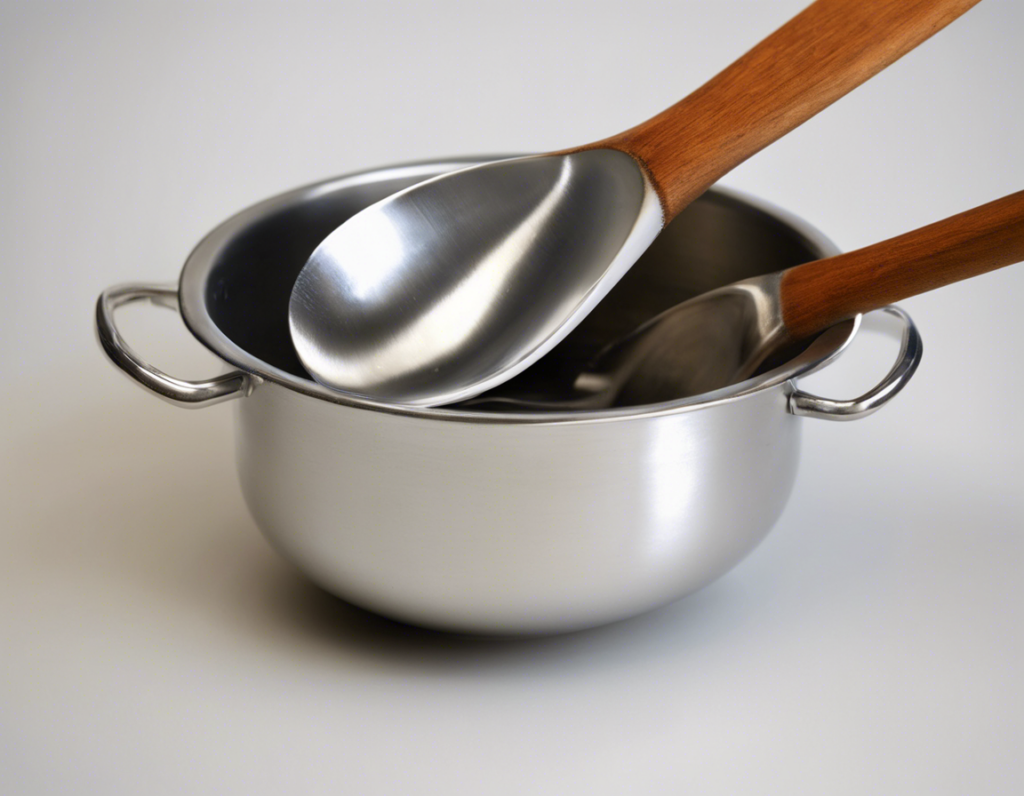Introduction
Washing dishes may seem like a mundane task, but for many, it can be a therapeutic ritual that offers a sense of accomplishment. However, when it comes to washing utensils like spoons, the process can sometimes be more challenging than expected. Splashing water all around, getting soap suds on your clothes, and facing the frustration of not being able to properly clean the spoon are common scenarios.
In this comprehensive guide, we will delve into the art of gentle washing, focusing specifically on how to wash a spoon without causing splashes. By mastering these techniques, you can turn dishwashing into a peaceful and efficient activity, free from unnecessary mess and stress.
The Importance of Gentle Washing
Before diving into the specifics of washing a spoon without splashing, it’s crucial to understand why gentle washing is beneficial. When you wash dishes aggressively or with too much force, you not only risk creating a mess but also potentially damaging the utensils. The delicate nature of spoons, especially those made of materials like silver or delicate patterns, requires a more mindful approach.
By adopting gentle washing practices, you can prolong the life of your utensils, maintain their aesthetics, and ensure a more enjoyable dishwashing experience. Now, let’s explore the step-by-step process of washing a spoon without splashing.
Step-by-Step Guide to Wash a Spoon Without Splashing
Step 1: Pre-Rinse
Before you begin the actual washing process, it’s helpful to give the spoon a quick pre-rinse under running water. This step removes any visible food particles or residue, making the subsequent washing easier and more effective.
Step 2: Use the Right Amount of Soap
Dispense a small amount of dish soap onto a damp sponge or cloth. It’s essential to use the right amount of soap to avoid excessive suds, which can lead to splashing. A pea-sized drop of soap is usually sufficient for a single spoon.
Step 3: Hold the Spoon Properly
To prevent splashing, hold the spoon close to the base, with the bowl of the spoon facing downwards. This positioning allows you to control the water flow more effectively and minimizes the chances of water splashing back onto you or the surrounding area.
Step 4: Gentle Scrubbing
Using the soapy sponge or cloth, gently scrub the entire surface of the spoon, including the bowl, handle, and any intricate designs. Avoid using excessive force, as it can create splashes and potentially damage the spoon’s finish.
Step 5: Rinse Thoroughly
Once you’ve cleaned the spoon, rinse it under running water while maintaining the same downward-facing angle. Ensure all soap residue is removed to prevent any potential flavors transferring to your food when using the spoon later.
Step 6: Drying
After rinsing, pat the spoon dry with a clean towel or let it air dry on a dish rack. Avoid shaking the spoon vigorously to dry it, as this can lead to water splashing around.
Additional Tips for Gentle Washing
-
Invest in a quality dish soap: Using a high-quality dish soap can make a significant difference in how effectively you can clean your utensils without causing splashing.
-
Avoid hot water: While hot water can be useful for removing tough stains, it can also create more steam and splashes. Stick to warm or lukewarm water for a gentler washing experience.
-
Use a gentle touch: Treat your utensils with care and avoid scrubbing them too harshly. A gentle touch is often all that’s needed to clean most dishes effectively.
-
Consider wearing an apron: If you’re prone to splashing water on your clothes while washing dishes, wearing an apron can help protect your clothing from stains and moisture.
-
Practice mindfulness: Stay present and focused while washing dishes, especially delicate items like spoons. Mindful washing can not only prevent splashing but also turn a chore into a meditative practice.
Frequently Asked Questions (FAQs)
-
Why is gentle washing important for utensils like spoons?
Gentle washing helps preserve the longevity and appearance of delicate utensils, preventing damage or premature wear. -
How can I prevent soap suds from splashing during dishwashing?
Using a minimal amount of soap, controlling water flow, and maintaining a downward angle while washing can prevent soap suds from splashing. -
Are there specific sponge types that are better for gentle washing?
Opt for soft sponges or microfiber cloths to minimize abrasion and ensure a gentle cleaning process. -
Should I dry my spoons immediately after washing?
Allowing spoons to air dry or gently patting them dry with a cloth is preferable to vigorously shaking them, which can cause splashing. -
Can I use a dishwasher for washing spoons if I want to avoid splashing?
While dishwashers can be convenient, handwashing allows for greater control over the washing process, reducing the likelihood of splashing.
By following these steps and tips for gentle washing, you can elevate your dishwashing routine, especially when it comes to washing delicate utensils like spoons. Remember, a mindful and gentle approach not only ensures cleanliness but also brings a sense of tranquility to your daily chores. Happy washing!
